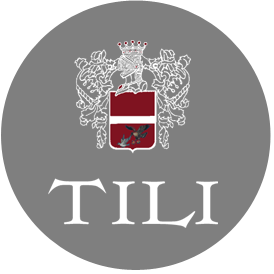
Umbria Through the Senses
Umbria, the green heart of Italy: this is the slogan by which this region is known worldwide.
But to grasp the meaning of a demanding word like ‘heart’, we need to talk about quality of life as a distinctive trait, relying on the five senses, the most direct way for each of us to perceive and capture reality.
Sight: the greenery of Umbria In any direction you look, even in a hurry and even aiming for a destination, green is truly everywhere: in protected parks and cultivated fields, on rolling hills and gentle mountainsides, where undergrowth and tall trees struggle for life against the stone. There’s the silvery green of the many olive trees, the deep green of the oaks around the Carceri hermitage in Assisi, the matte green of the cypresses, the brightness of the grasslands in Castelluccio in spring, and the dense green of cornfields and sunflower plantations. And then there’s the green of the cities, the most surprising of all. A green that not only peeks out from flowerbeds but also bursts between buildings in the historic centers, with embankments turning into gardens with tall trees. With the countryside blending into neighborhoods, in transitions that make each of Umbria’s cities a mosaic of astonishing beauty.
Touch: the materials of art Traveling through Umbria without getting your hands dirty would be a great pity! Because while touching valuable paintings and sculptures is certainly inappropriate, limiting oneself to looking at the materials that make up the cities without ever feeling their effect on the skin would be equally a loss. The marble of a church will never be the same in summer and winter or at different times of the day; the tufa of an Etruscan wall will be crumbly, ever-changing under the fingers; ceramics will be different on the counter in Deruta or Gualdo Tadino, or when exposed to the air at a market alongside terracotta. The wood of beams, doors, and fixtures will tell, inch by inch, from the first seasoning to the wrinkles inflicted by time and weather. Touching the variability firsthand is the best way to realize that a monument, like a city, is a living organism.
Hearing: listening to silence It may be useful to leave behind asphalted paths, but often it’s not even necessary. The place will be recognizable to the naked eye: few or even no houses. And above, the sky: clear or cloudy, dark or starry. And silence will echo in the ears like, as children, the sea of shells. And gradually, the sounds of nature that we’ve lost the habit of listening to will resurface. It may be in a forest, near a river, in an isolated lake made silent by darkness. It may happen among Etruscan or Roman ruins, or along the paths of great mysticism. It may occur in a plowed field in summer, in the hours when the heat dulls the nature’s rustles, or in winter cities when sometimes even snow dampens the rustles. The important thing is not to let this opportunity, not so easy to seize elsewhere, of the magic of silence escape.
Smell: the scents of seasons and the earth Here, in Umbria, the air carries with it the scents of life and work, the aromas of bread, earth, and wine. At the beginning of autumn, it’s the smell of wood that fills the alleys of the historic centers and creates hints that speak of introspection and intimacy. The beautiful season brings intoxicating scents of herbs and lavender, lime trees in bloom, and live and powerful sap already flowing in the plants, awakening them. Another smell can be chased, different from season to season but constant in its presence: the smell of water. That of springs, lakes, waterfalls, fountains, and the many waterways that cross the region. An almost incessant smell of water, a tale of a relationship between man and nature.
Taste: the flavors of regional cuisine Here, the products of the earth speak directly to the heart. And the ancient knowledge of men relives in the same pleasure one feels when welcoming a friend. Among woods, valleys, and plateaus and along the gentle slopes of hills, you can find precious treasures, all to be enjoyed: in Umbria, you can travel along roads that lead you to taste the excellent products of its land. Let yourself be led to discover the ancient flavors that have influenced Umbria’s wine and food culture, such as pork butchery, lentils, saffron, truffles, cheeses, wine, and oil. A small region, a great green heart that at first glance unfolds multiple, precise, and well-connotated identities, a legacy of a history made of fragmentations and vicissitudes. However, there is a common thread that over the centuries has bound the Umbrian territory in an indissoluble bond. It is the widespread spirituality, which from Jacopone da Todi, St. Francis, and St. Clare, reaches years close to us, with the theoretical elaboration of Aldo Capitini culminating in the March of Peace. It is this ideal of peace that makes Umbria a combination of reason and feeling, corporeality, and spirituality that makes it united and unique in the world.






Sorry, the comment form is closed at this time.